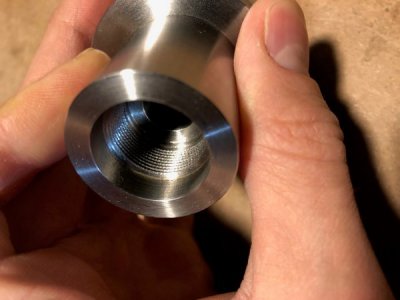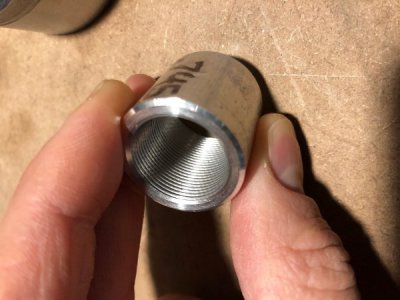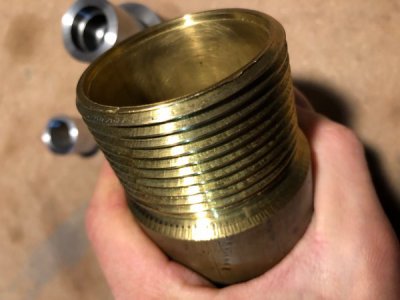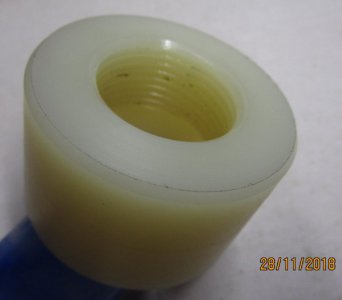- Joined
- Mar 26, 2018
- Messages
- 2,725
Hi all! I haven't posted here in a while as life got a little busy and its been tough to find time to be in the shop. I just got back to some projects, and I figured I would ask for some advice on a reoccurring problem I'm having.
I do a lot of single point threading and I'm quite comfortable hitting precision thread fits, however from day 1 of using this lathe I have been getting chatter marks on the flanks of my threads. These chatter marks are periodic and typically only appear on the flank of the thread opposite the direction I am cutting (if I am cutting towards the spindle they will be on the left flank of the thread, and if I'm going towards the tailstock then they will appear on the right). The opposite flank of the thread is usually very nice looking with no discernible chatter. You can feel the chatter when threading the components together, however this doesn't seem to impair the function of the thread.
I first thought that the tooling I was using has some flex in the insert pocket (MTVOR holder for "on-edge" threading inserts), however I have seen this on all threading attempts including "lay down" style insert tools and internal boring bar threading tools. I have also tried threading both with the compound slide at 60* as well as pure radial threading (which I do most of the time) and neither of these seems to change the amount of chatter. It appears pretty much the same on aluminum, steel, and brass.
My lathe is a 12x36 and is fairly tight (although no paradigm of rigidity compared to the monsters that some of you have). I have thought about slop in the leadscrew or half nut as a potential culprit, but I'm not sure how to verify. I also thread with the back gear engaged, however I'm not sure this is a problem since other machining with the back gear doesn't show chatter.
Any thoughts on how to get really clean single pointed threads would be great! Thanks.

~M20x6 in 41L40 steel. "Laydown" style threading insert

Same thread in an aluminum practice piece

2.25"x8 TPI in brass. "On Edge" style insert (there are other issues with this thread, but you can see the chatter marks periodically)
I do a lot of single point threading and I'm quite comfortable hitting precision thread fits, however from day 1 of using this lathe I have been getting chatter marks on the flanks of my threads. These chatter marks are periodic and typically only appear on the flank of the thread opposite the direction I am cutting (if I am cutting towards the spindle they will be on the left flank of the thread, and if I'm going towards the tailstock then they will appear on the right). The opposite flank of the thread is usually very nice looking with no discernible chatter. You can feel the chatter when threading the components together, however this doesn't seem to impair the function of the thread.
I first thought that the tooling I was using has some flex in the insert pocket (MTVOR holder for "on-edge" threading inserts), however I have seen this on all threading attempts including "lay down" style insert tools and internal boring bar threading tools. I have also tried threading both with the compound slide at 60* as well as pure radial threading (which I do most of the time) and neither of these seems to change the amount of chatter. It appears pretty much the same on aluminum, steel, and brass.
My lathe is a 12x36 and is fairly tight (although no paradigm of rigidity compared to the monsters that some of you have). I have thought about slop in the leadscrew or half nut as a potential culprit, but I'm not sure how to verify. I also thread with the back gear engaged, however I'm not sure this is a problem since other machining with the back gear doesn't show chatter.
Any thoughts on how to get really clean single pointed threads would be great! Thanks.

~M20x6 in 41L40 steel. "Laydown" style threading insert

Same thread in an aluminum practice piece

2.25"x8 TPI in brass. "On Edge" style insert (there are other issues with this thread, but you can see the chatter marks periodically)

